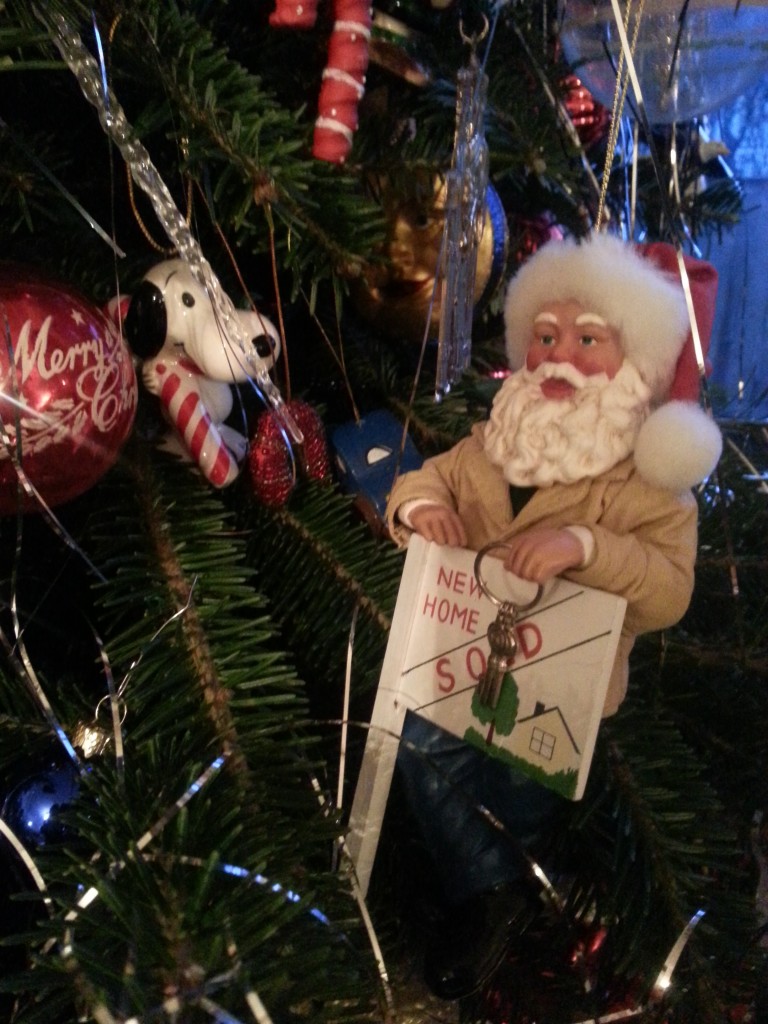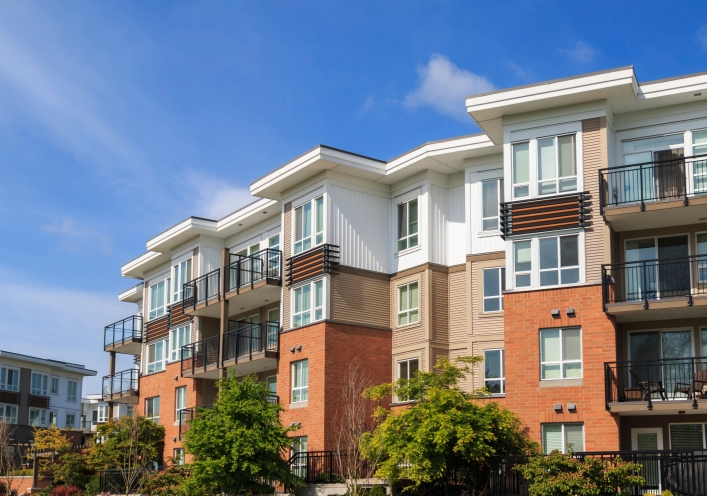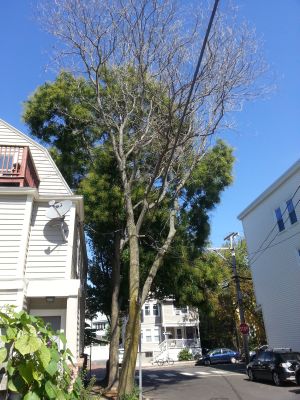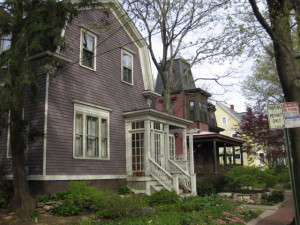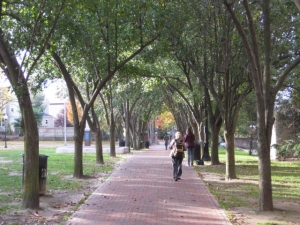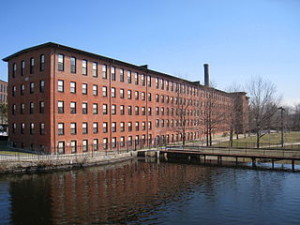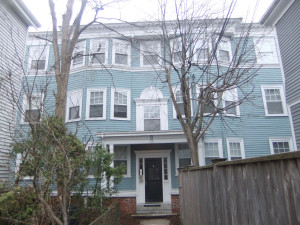Centers And Squares
Welcome to Centers and Squares
As a Cambridge real estate agent, the city squares of Cambridge, Somerville and Medford and the town centers of Arlington, Watertown and Belmont, Massachusetts are my home turf. And as a lifelong New Englander who’s lived within twenty miles of Boston most of my life, I can introduce you to other nearby towns as we search for your new home. If you’re planning to sell your home in Cambridge, MA or nearby you’ll find plenty of info about the home selling process here too. Questions? Send me an email or call me at 617-504-1737.
Merry Christmas
Tis a rainy, rainy Christmas.
Best wishes for the happiest of holidays for you and yours.
Liz @ Centers and Squares
Your HO-6 Condo Insurance Policy Questions Answered
If you’ve purchased a condo recently you may have been required to purchase HO-6 insurance coverage. HO-6 insurance is required if your condo association’s master insurance policy isn’t “all-in” coverage. Wondering what it’s all about? Today’s guest post by Maria Lampros of Guard Insurance should answer all your questions.
What is an HO-6 insurance policy?
An HO-6 policy is like a home insurance policy, but instead is for condominium unit owners. Lenders have started requiring HO-6 insurance policies for new condo unit purchases. This is commonly known as “studs-in” or “walls-in” coverage.
Why do I need a condo insurance policy, when I already pay into my condo association master insurance policy?
When purchasing HO-6 condo insurance, it is important to take into consider the master condo insurance policy, if there is one. Many master insurance policies cover only the property, common areas and physical structure of your building. But there is a lot more to your condo than that.
Your condo is your home, and your home is filled with items that are unique to you and your lifestyle, like your furnishings, your computer equipment and any upgrades you may have installed. HO-6 Condo Insurance can provide coverage from damages that occur within your unit. Beyond insuring your personal belongings, your HO-6 policy can also help you control deductibles as well as provide comprehensive liability coverage.
What can an HO-6 condo insurance coverage policy include?
The basic categories of an HO-6 policy are:
- Dwelling
- Personal Property
- Loss of Use
- Additional Property Coverage
- Personal Liability
- Medical Payments to Others
- Additional Liability Coverage
DWELLING
Since insurance coverage on your condominium or apartment building is normally purchased by your condo association, your dwelling coverage focuses on your real property within your condo. Up to a specified limit, an HO-6 policy provides coverage on a replacement cost basis to insure the items in the following four categories:
Alterations and improvements – Your built-in cabinets, kitchen appliances and interior partitions are examples.
Common areas – In the event that your condo association by-laws require you to insure property which is outside your condo, for example a portion of your hallway or stairs, entrance or walkway, coverage can be provided by your dwelling coverage.
Property exclusive to your condominium – Your real property that pertains fully to your condominium, for example, upgraded doors and safety locks.
Structures which you own that are located off premises – Dwelling coverage can also provide coverage for a private garage or storage shed which you own that is located in another part of your building complex. Read the rest of this entry »
ReMax Destiny In the News
ReMax Destiny has been in the news lately.
I’m delighted to report that the Boston Globe, for the second year, has named ReMax Destiny one of its “Top Places to Work“. ReMax offers real estate services in 80 countries but Remax offices are independently owned and operated so our two offices – in Cambridge and JP – landed us on the Small Employers list. We’re #6 on the list.
ReMax Destiny is a great place to work and I’m very happy I made the decision to move my business here two years ago. We’ve got a super group of agents, a hard working and enthusiastic staff, and a broker, Paul Turcotte, who’s committed to staying ahead of the curve and ensuring we have all the tools necessary to provide top notch service to our clients.
Employees chime in for the Top Places to Work honors but our other recent award was voted on by the community.
In the Fall issue of Scout Cambridge that featured the “Best Of” award winners ReMax Destiny won for Best Real Estate Agent or Agency. Thanks to all who voted for us! We were in good company with many of my favorite Cambridge institutions garnering Best Of awards including the S & S, Pemberton Farms, Formaggios, and Porter Square Books. Congratulations to all.
What’s Killing the Trees?
Dying and Dead Trees
Have you noticed all the dead and dying trees? If you haven’t you’re not paying attention – and you’re not alone. Dead trees are everywhere. Many more are dying or not doing well at all. Few people seem aware of the problem however and there’s little information to be found about it.
But drive around Massachusetts and you’re bound to spot dying and dead trees if you look. Anywhere you go – Cambridge, Somerville, Brookline, Concord, Winchester, New Hampshire – anywhere and everywhere you drive through.
I started noticing them last year. I became a bit obsessed and would play the “dead tree game” wherever I drove. Passengers would initially be a bit taken aback as I called out “Dead tree!” over and over again, but eventually they too would join in.
My obsession was lifted only when winter came and the lack of leaves made it impossible to distinguish the dead trees. Since the no-leaves season is fast approaching I urge you to be on the lookout now as you’re walking or driving around – you’re sure to see dead or unhealthy trees all around.
One reason that few people seem to be aware of what’s happening is that the dead trees get cut down. I’d been planning to photograph the dead trees as evidence for some time but was finally motivated to do so after a particularly beautiful (but dead) tree that could be seen from Mass Ave disappeared. Already several dead trees in the slideshow have been removed.
The photos I took for this slideshow, in August mind you when trees should be fully covered in green leaves, show trees in Cambridge with a few from Somerville, Medford and Watertown. Dead trees are everywhere in Cambridge – from Broadway to Brattle Street, from East Cambridge to West. Dead trees are in yards, parks, schoolgrounds, and everywhere lining the streets. We’ve lost almost all of the last few years’ investment in street trees as well as many of the much older and larger trees that line the city sidewalks.
The trees you see here may very well be gone soon. Sadly there’ll be no shortage of subjects for next year’s slideshow as the dozens of very sick trees around town are likely to have died by next summer.
When my father identified one dead tree as an elm I realized that several of the most striking dead trees were some of the few remaining elms in the area, long-time survivors felled not by Dutch Elm disease but by whatever’s killing Massachusetts trees now. I drove by a few of my favorites. There are three stately elms in a row on Main Street in Medford. One appears in very bad shape and the other two don’t look their best. I stopped by Manassas Street where a huge gorgeous elm stood on the corner for decades. It had been fine when I last worked around the corner at Coldwell Banker so I was stunned to see that only a stump remained.
Other species that seem particularly hard hit are the copper beech and at least one type of maple. The glorious copper beech in front of the Cambridge Public Library is in terrible shape and can be seen in the slide show. You’ll see sickly maples everywhere with many bare branches and very small leaves. In many towns, in Massachusetts and NH, in yard after yard, some types of spruce trees were dead or dying. Oaks seem to be holding up better but when I walked past some of the majestic oaks along the Mystic River I realized that a number didn’t look well up close.
So what’s killing the trees in Massachusetts and NH?
I vote for drought and continued lack of water as a major cause. For at least the last two or three years, including this summer, we’ve been in a largely unacknowledged drought in the city. It was only last week that for the first time I heard a weatherman use the “d” word – until then the forecasters would simply celebrate the unending days of no rain. Even when rain was forecast, or when nearby towns got plenty of rain, the prevailing weather pattern meant that Cambridge area would get little or none. Trees often take years to succumb to drought and we can expect to continue to lose trees that are stressed from lack of water.
Street trees are particularly vulnerable – I could have added many, many photos to the slideshow of young and not-so-young street trees that have died. In part, I blame this on the very small ground area around many of the trees making it even more difficult for them to get adequate water. But drive down Powderhouse Boulevard from Route 16 and you’ll see many dying or dead trees despite the grassy median they grow in. Young street trees need to be watered regularly and since they’re not it’s not too surprising (though it’s very frustrating) that they’ve succumbed. But older street trees are dying too.
Over-salting is one reason that local trees near streets and highways are dying. Last winter I was mystified to see trees along Routes 2 and 16 that were totally white. Then I realized that they were coated in salt from top to bottom that had been made airborne by passing cars. Cities and towns need to cut back on the salt and everybody needs to buy snow tires, slow down, or stay off the roads when it’s stormy.
Invasive pests are another important cause of tree death. Right now pests we’ve got to contend with include the emerald ash borer, woolly adelgid, and winter moth.
Invasive vines are another tree killer. Many times I’ve come across trees that have a lot of greenery with dead branches sticking out at the top. Since many of Cambridge’s trees have had the new growth at the top die off, I’ve often mistaken these trees for ones where only the new branches are affected. Look more closely however, and you realize that the greenery is actually leaves on the vine that’s killed the tree and the tree itself is now a dead host.
Some are suggesting that pollution is a major contributor to the tree die-off. Locally, people have suggested that some trees have succumbed to underground gas leaks from old gas pipes.
Is this the first stage of a changing landscape due to climate change? Most of the potential causes listed above can be lumped together under climate change. It’s difficult to imagine what our towns and cities will look like when the local climate no longer supports the trees we know and love. As a homeowner, it’s difficult to know what types of trees to plant – what will thrive here decades from now?
You can’t help but think that the wild weather we’ve experienced in the last few years is part of the changing climate. I’ve documented the downed trees from freak storms and microbursts more than once. The wild weather of a couple of weeks ago brought down more large trees locally – trees we really don’t have to spare.
Why Should We Care About Tree Loss?
I’m fully aware that not everyone is a fan of trees. I’ve had enough beautiful trees taken down near me by “tree haters” that I leap out of bed at any sound that suggests a chain saw is on the job. Some people see trees as a hassle – heaven forbid they have to rake – and others as a menace. Others value smooth pavement over driveway or sidewalk more than they do the tree. But it will be a sad place to live if we continue to lose trees at the current pace. And I’m afraid it’s a bit like the frog in the pot of water who fails to realize it’s getting hotter until too late. It’s easy to overlook how important the trees around us are until they’re gone. And then it will be decades before we can get back what we’ve lost.
Much of it boils down (no pun intended Mr. Frog) to quality of life. Without a decent tree canopy it will be a lot hotter around here. Acres of asphalt baking in the sun without benefit of trees’ shade make for a miserable summer. And it’s not just the lack of sun and daylight that make people feel gloomier in the winter – it’s the lack of greenery. A bare tree’s branches are a thing of beauty but nothing beats the new green leaves of spring. Here’s a super article on the impact of trees on human health and happiness.
Aesthetics are a huge part of trees’ value. There’s nothing more grim than a city street barren of trees. There are tree-less streets around here that are about as depressing a block as you’ll see. City greenery is one reason real estate tends to sell better in the spring – everything looks better when the leaves are back on the trees. Chances are almost any Cambridge street that you consider appealing is lined with trees. But perhaps not for long if something’s not done: one Avon Hill block I photographed had three or four huge trees reduced to stumps and several others dead or almost gone.
Property values are absolutely impacted by trees or the lack of trees. My own street in Cambridge was described as a “tree-lined bower” some decades ago. That’s far from the case now as almost all of the trees have been lost and not replaced. I showed one real estate buyer a condo on my block and she turned up her nose and said “but there aren’t any trees on this street”. Needless to say, a sale was not made that day.
Privacy is another benefit of our city trees that’s often overlooked until a tree is gone. Most of us would far rather have our views framed in leaves than be staring into our next door neighbor’s house. It’s easy to take for granted just how much a tree blocks from view.
What Can Be Done About the Dying Trees?
While some of reasons trees are dying may be beyond our individual control there are things we can do:
Water the trees for cripes sake! Whether it’s a tree in your yard, a tree in front of your house, or a tree outside your office – get a bucket and get watering. The trees need regular watering and need water as they head into winter.
Consult an arborist about any distressed trees in your yard. I’ve got one of mine on a regular treatment plan for winter moths. I just wish I could get the raggedy, beleaguered street trees sprayed as well.
Encourage the city to water the trees they plant. Trees need a great deal of water when they’re first transplanted. City trees never seem to get what they need. The lack of rain has exacerbated the problem resulting in the death of almost all the youngest trees. Can’t we give some kids a job for the summer?
Talk to your representatives about using less salt or de-icer in the winter months. It’s better for trees and for local ponds, streams and lakes.
Become better stewards of the tree canopy. It’s a mixed bag around here in terms of what towns and cities are doing to ensure a healthy tree canopy. Cambridge has hearings about cutting down street trees but I’m not sure it makes any difference. Far too many trees aren’t replaced. Brookline’s magnificent tree canopy puts Cambridge’s motley treescape to shame. What have they been doing right? Medford calls itself a “Tree City” but its streets are often tree-free or what trees are there end up getting mutilated for overhead wires.
Actually become a tree steward. Every year Massachusetts offers a two-day tree steward training. The training is held in a rural area but there’s also an emphasis on the health and maintenance of urban trees.
Plant trees. Plant a tree in your yard or work with the city to get street trees planted or replanted on your block. It’s hard to know what trees will do well going forward. What will our climate be like 30, 40, 60 years from now? Recently it seems the newer oak trees the city planted seem to be doing well – their roots go down deep and they seem to do better finding enough water.
Press for answers about the problem of dying trees. We need to start asking questions. It’s too easy to overlook the die-off of trees as the dead ones are cut down and lost from memory. Something’s happening though and we need to find out the causes before it’s too late.
Here’s some more from the internet about trees dying:
The Impact of Our Drought on Trees
Climate Change, Invasives and Tree Death
What’s Killing the Spruce Trees?
Superb Post about Tree Death and Pollution
Preservation Month Events in Somerville
May is Historic Preservation Month and Somerville has a wealth of activities planned throughout the month. Here are some of them:
Tomorrow, Saturday, May 3, 2014, the Somerville and Cambridge historic commissions are teaming up to offer a walking tour of one of my favorite streets – Orchard Street. Somerville and Cambridge are considering nominating the Orchard Street neighborhood for the National Register of Historic Places. The walk starts at 10 am at the Porter Square Plaza on Somerville Ave across from the Porter Square T station
On Sunday, May 18, 2014 from 2 to 4 pm there’ll be a Walking Tour of East Somerville. “Identifying Architectural Gems from Gilman Square to East Somerville will be led by Edward Gordon of the Victorain Society in America. The tour will begin at the Somerville Public Library, 81 Highland Avenue.
Mark your calendars for the Somerville Historic Preservation Awards Ceremony held on Thursday, May 22, 2014 from 6:30 to 9 pm at the Somerville Armory, 191 Highland Avenue. A dozen Somerville property owners will be honored for their historic preservation work on the exteriors of their properties. It’s a great opportunity to hear about the transformations people have made with their rehab and restoration work.
On Wednesday, May 28, 2014 from 7 to 8:30 pm there’ll be a talk at the Somerville Public Library, 191 Highland Avenue, on “Researching the History of Your House and Your Family“. If you’re interested in local genealogy or the history of your old Somerville house you don’t want to miss this lecture.
For more information about any of the events you can contact the Somerville Historic Preservation Commission at 617-625-6600 x2532.
Davis Square Bike Path Heading to Boston
It was announced today that the Davis Square bike path will be heading to Boston. Currently scheduled to be extended to Lowell Street soon when construction ends at the Maxwell Green complex, the MBTA will be extending the bike path along the path of the planned Green Line extension.
When finished, the bike path will connect to paths along the Charles River, connecting 11 cities and towns over a 48 mile stretch. It’s an amazing prospect and sounds like the nicest commute possible into the city and beyond.
The announcement from the city of Somerville is well worth reading with interesting details about Somerville’s efforts that have landed it top rankings in bike-friendliness and walkability.
With my new listing at 31 Adams Street in Somerville, I’ve been looking more closely at plans for the Green Line extension. These are exciting prospects for Somerville, too long a very dense city with too few top notch transportation choices. Kudos to the city government and Mayor Curtatone for their extensive efforts to improve the city’s transportation options.
Is Waltham the Next Somerville?
Is Waltham the next Somerville? That’s what a Boston Globe article on Sunday suggested, in the paper’s super new real estate section “Address.”
Waltham the next Somerville? What does that even mean?
The Globe reporter seemed to pose the question in terms of popularity among real estate buyers and price appreciation. Somerville’s been experiencing steep price increases and plenty of bidding wars. With some Somerville one-bedroom condos selling for more than $400,000 and 34% of the condos sold in the last year selling for more than $500,000, including 5 for more than $1 million – bargains are hard to come by in the Somerville real estate market nowadays.
Head over to Waltham, however, and you can still find a two-bedroom condo priced in the $300,000 range. And that condo will be near Moody Street – more about Moody Street to follow. It’s even possible to buy single family houses in Waltham for under $350,000 – 66 houses sold for less than $350,000 in Waltham vs. just 10 in Somerville.
So what’s made Somerville so popular with buyers? Proximity to Boston is certainly part of the city’s draw with the Orange Line at one end and the Red Line at the other. Many buyers are also anticipating that getting to Boston will be easier eventually when the long promised Green Line stations become a reality. Much of Somerville’s popularity is due to the vibrancy of its squares – Davis Square, Union Square, Ball Square, Porter Square, etc. City government is progressive, there’s an active arts scene, and a “hip” quotient of sorts that’s been reported on for years (I thought it was nuts when I read it first in the 1990s in Utne Reader but Somerville has been trending towards hip ever since).
Driving down Moody Street in Waltham the other day I got the sense that Waltham’s well on its way to being the “next Somerville” – a city that will appeal to young residents and visitors alike. The street is lined with restaurants, shops, and bars and there’s a Landmark Theatre (the other’s in Kendall Square Cambridge), the Embassy Cinema, showing independent film right around the corner. If you haven’t been to downtown Waltham in years you’re in for a surprise.
Waltham’s a college town – home to both Brandeis and Babson. The commuter rail station is in the center of town and so’s the Charles River. Waltham’s manufacturing past is celebrated at the Charles River Museum of Industry & Innovation. The museum is located in the Francis Cabot Lowell Mill downtown near the Embassy Cinema (look for the smokestack). The museum is host to the annual Steampunk Festival – Somerville has its Fluff Festival, Waltham has steampunk. Another one of Waltham’s beautiful old mill complexes, the Waltham Watch Factory, on Crescent Street on the Charles River, has been redeveloped as loft apartments and office space.
Whether or not it’s the “next Somerville” Waltham is well worth considering if you’re priced out of Somerville and Cambridge or want to look for a place where your real estate budget goes a bit further. With it’s vibrant downtown, rich history, and easy access to Boston and the 128 corridor, there’s lots to like about Waltham and it’s easy to imagine that there’s room on the up-side for real estate values.
Mysterious Cambridge Investor Outed by the Boston Globe
For months the Cambridge real estate community has been buzzing about the mysterious Chinese investor who’s been buying up multi-unit properties around Cambridge at a rapid pace. The investor, “billionaire businessman Gerald L. Chan,” was outed by the Boston Globe on Saturday in a front page article that focused on properties Chan purchased in Harvard Square over the last 18 months.
The Globe article describes how Chan, a leading Hong Kong real estate developer who attended Harvard in the 1970s, spent about $120 million buying properties in Harvard Square including the Veritas Hotel and the building that houses the American Express travel office.
But Chan’s Cambridge purchases extend well beyond Harvard Square. Here are some of the multi-unit buildings in other Cambridge neighborhoods that the investor has recently purchased:
- 20 Marie Ave in Mid Cambridge, a triple-decker for $1,580,000
- 503 Franklin St Cambridge, a triple-decker for $1,550,000
- 566 Green Street in the Riverside neighborhood, a triple-decker for $1,600,00
- 56 Hancock St, a 6-unit building in Mid Cambridge for $1,630,000
- 9 Eustis Street, a multi-unit building in the Agassiz neighborhod for $2,350,000
- 222 Concord Ave, a multi-unit building in Huron Village for $2,400,000
- 10-12 Pleasant Street, a 6-unit building in Central Square for $3,130,000
- 31-33 Portsmouth St, a 12-unit building in Kendall Square for $5,880,000
Forbes, the Wall Street Journal, Bloomberg, and other financial news outlets have all been reporting on Chinese investments in US real estate. As the Chinese economy booms, many investors are looking to the US to diversify their real estate portfolios. It was good to know some of the details behind the investment boomlet right here in Cambridge.
Copyright © 2008 - 2014 Centers And Squares Agent Login Design by Real Estate Tomato Powered by Tomato Real Estate Blogs
